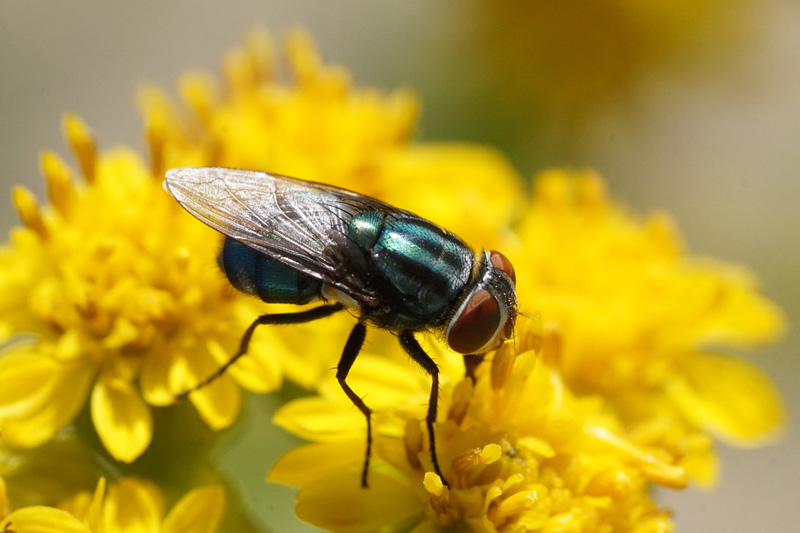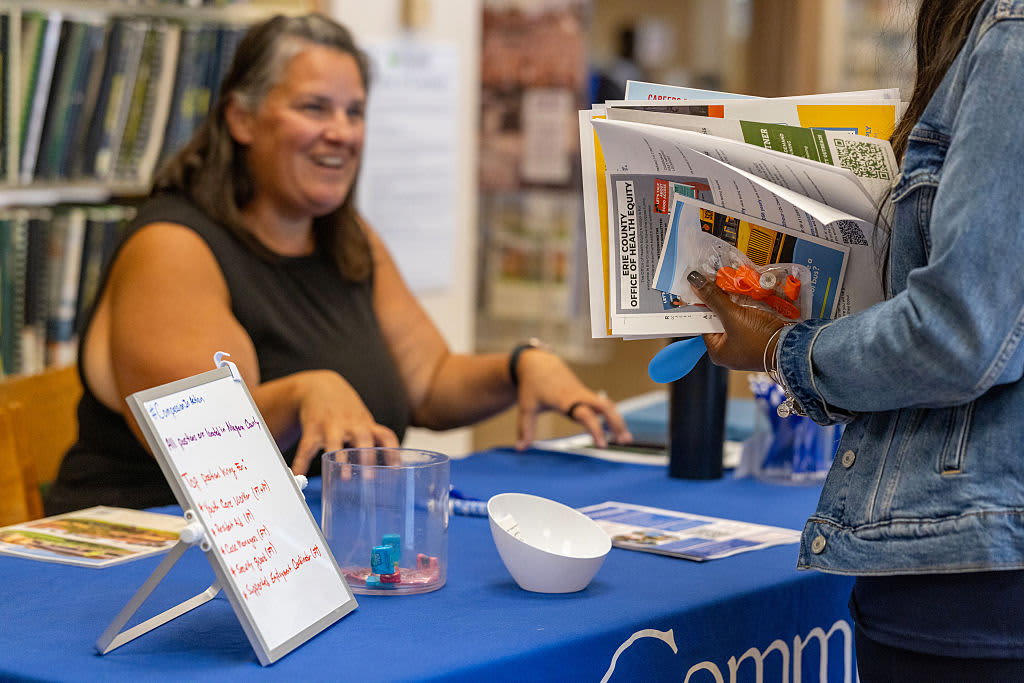As the growing season winds down, insect activity fades as well. After all, many insects associate closely with plants, either as pollinators or as herbivores. But some insects remain active through the fall and into the winter; indeed, for some, winter sees the peak of their activity. During the colder months on Martha’s Vineyard, a wide taxonomic range of insects can be found, if you know where and how to look.
But probably the most prominent group of insects during the cooler parts of the year are flies—members of the vast taxonomic order Diptera. Some flies overwinter as adults and rouse themselves during periods of mild weather. Many other species are simply incredibly hardy, able to remain active as the weather cools. And for a few flies, the coldest months see the peak of adult activity. Even on chilly days when I can find nothing else, I can almost always come up with a few flies to watch!
Often, cold-weather flies are blowflies, members of the family Calliphoridae. The family is not particularly well represented on our continent, with fewer than 100 species known here. Moreover, a relatively high percentage of the blowflies that occur here are non-native, and many are regarded (with good reason) as threats to the health of humans or livestock.
On the other hand, many Calliphorids are gorgeous insects, with iridescent green figuring prominently among the species in this group. One sterling example, both for good and ill, is the ominously named secondary screwworm fly, *Cochliomyia macellaria*.
This species does not appear to be common on the Vineyard, with just a few records, all from the month of October. It also appears to be a recent arrival—the earliest island observation I can find is from 2022. But these circumstances alone are worth a closer look.
The core range of the species lies well to the south of us, and relatively few records exist to our north. I suspect its presence here reflects a northward expansion of the fly’s range, perhaps a response to climate change. In much of its range, the species is abundant, and assuming it is now established on Martha’s Vineyard, *Cochliomyia* will likely grow steadily more common here.
In any case, *C. macellaria* is a strikingly beautiful fly—iridescent green with large, red eyes and pale, longitudinal stripes on its thorax. In good light, this fly’s stocky body seems to glow. The first time I saw one, feeding on goldenrod blossoms outside my office in Vineyard Haven, I felt fortunate indeed. A stunningly colored pollinator, perhaps some kind of beneficial hoverfly—what’s not to like?
My opinion changed, though, once I identified the fly and researched its life history.
First, as I’ve noted, it’s a blowfly and not a syrphid, or hoverfly. While adult *Cochliomyia* do visit flowers frequently, they are also said to feed happily—like most blowflies—on a variety of less appealing substrates: carrion, decaying organic matter, or feces.
Like most members of this family, secondary screwworm flies have mouthparts that resemble a sponge on the end of a straw. They put that organ to use, sucking up nearly any kind of soft, nutrient-rich substance.
But it is the larval stage of *Cochliomyia* that really disappointed me!
Like most of their relatives, *Cochliomyia* larvae feed preferentially on carrion. This is a practical choice—things are dying out there all the time, so there is never a shortage of food for a carrion eater.
Indeed, a reliance on carrion surely accounts for the ability of blowflies to continue reproducing even in cold weather. Mortality of many animals increases as winter sets in and conditions grow harsher, meaning that the food supply for blowfly larvae tends to increase, rather than diminish, as winter approaches.
But I’m sorry to say it doesn’t end at carrion.
The common name of this fly, “secondary screwworm,” reflects the fact that its larvae often feed as secondary parasites on wounds or lesions on mammals caused by other insects, such as botflies. In regions with poor medical care, humans can be victims of secondary screwworm infestation. Even where healthcare is good, animals including pets and livestock can fall prey.
I am at home with the idea that there is no moral element to the life histories of animals; feeding on feces, carrion, or open wounds—at least when it’s a fly doing it—is ethically neutral, just some of the infinite ways that insects have evolved to get nourishment.
Still, I feel a bit of a disconnect between the beauty of an adult *Cochliomyia* feeding idyllically on a goldenrod blossom and what I now know about the full range of behavior of this fly. This might be the only instance when I’ve wanted to know less about an insect I’ve encountered!
But one has to admire *Cochliomyia macellaria* as an example of the hardiness of blowflies, and their resourcefulness in seizing ecological opportunities.
https://www.mvtimes.com/2025/10/29/wild-side-secondary-screwworm-fly/



